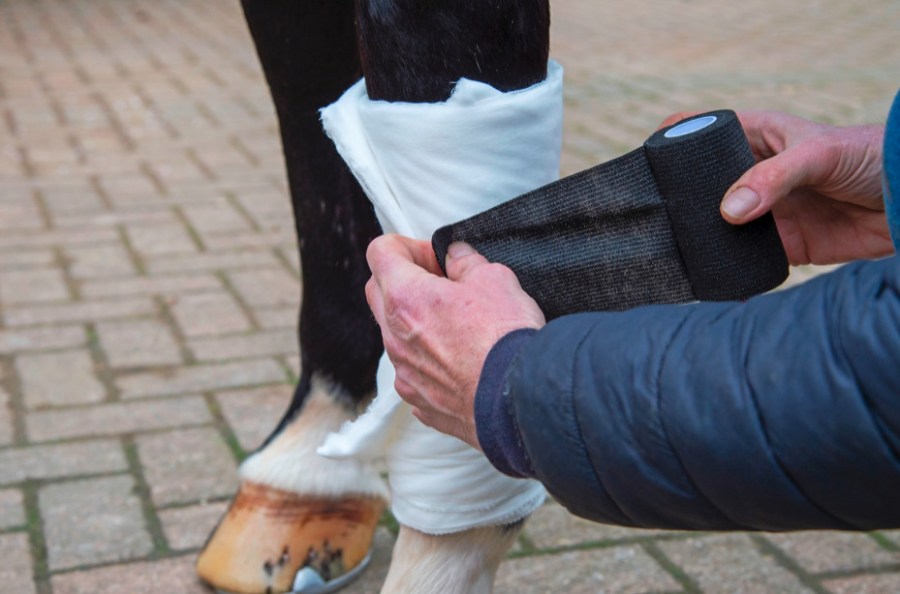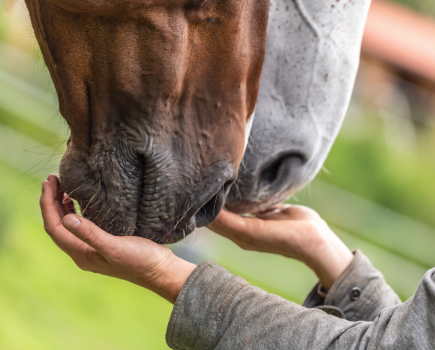Whether you are applying a stable bandage to support your horse’s legs overnight, or are bandaging a wound, knowing how to apply an effective bandage is a vital part of ownership.
This step-by-step guide from supergroom Alan Davies will show you how to bandage a horse’s lower leg correctly, safely and securely.
When to bandage a horse’s leg
Some of the most common reasons for bandaging a horse’s legs include:
- Providing warmth and support to tired tendons and ligaments.
- Preventing or reducing swelling after exercise or during box rest.
- Protecting legs from injury during exercise or transport.
- Covering wounds to prevent contamination and facilitate healing.
The golden rule? There are a variety of different bandages to suit different occasions, but it’s important to note that any bandage can be detrimental if applied incorrectly.
Essential kit you will need
The bandage itself
As a rule of thumb, a bandage on a horse’s leg should always consist of at least two layers (padding and bandage), with wound bandages requiring a third layer (wound dressing).
Wound dressing
If a wound is present, the contact layer should be a wound dressing, such as a sterile, non-adherent gauze pad.
Padding
The middle layer consists of a soft, absorbent padding to cushion and protect the limb, and to evenly distribute pressure applied by the bandage. Roll cotton, sheet cotton, and combine cotton (also known as Gamgee) are excellent padding materials, as are cotton or quilted wraps, which can be washed and reused.
Bandage
The outer layer consists of the bandage itself, which secures the other layers and provides compression. Bandages come in a variety of materials, including fleece, cotton, and polyester knit bandages with Velcro fasteners, as well as flexible cohesive bandages (Vet Wrap).
Make sure the bandage is between four and six inches wide, as a narrower bandage can result in pressure points and constriction of the limb.
Step-by-step guide
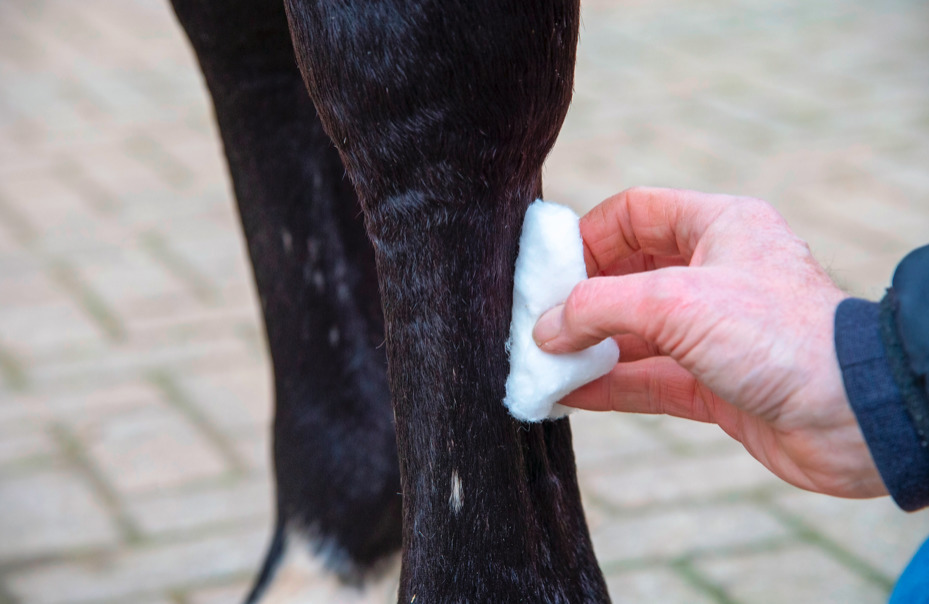 STEP ONE
STEP ONE
When bandaging over a wound, first ensure the leg is clean and dry and that the wound has been thoroughly cleaned.
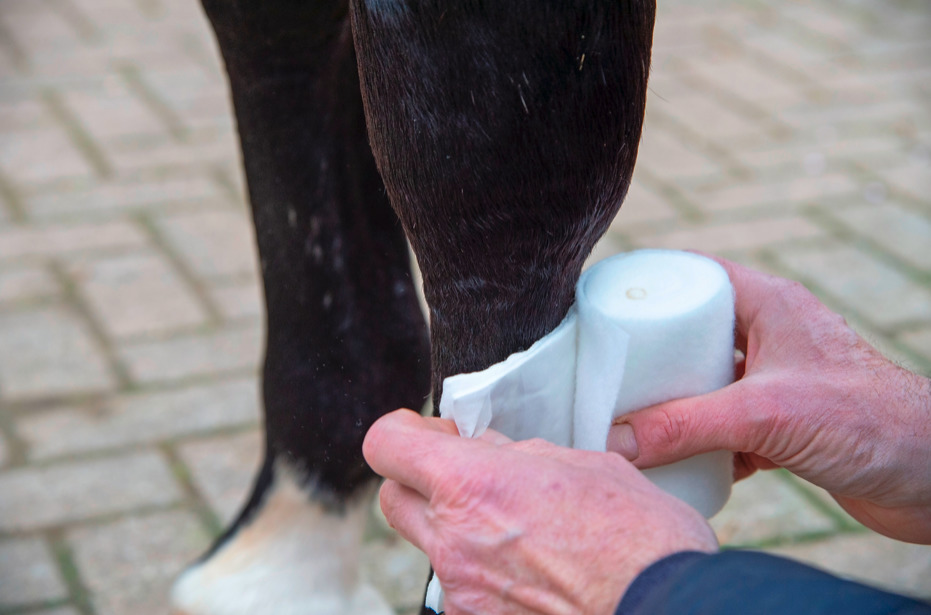 STEP TWO
STEP TWO
Apply a sterile, non-adherent gauze or wound dressing and secure it loosely by wrapping roll gauze around the leg two or three times.
 STEP THREE
STEP THREE
Wrap a sheet of combine cotton around the leg.
Ensure you cover the wound and dressing completely, with the layer of padding at least one inch thick.
 STEP FOUR
STEP FOUR
Apply the cohesive bandage, starting an inch below the top of the padding and wrapping down the leg in a spiral pattern, overlapping the previous layer by half.
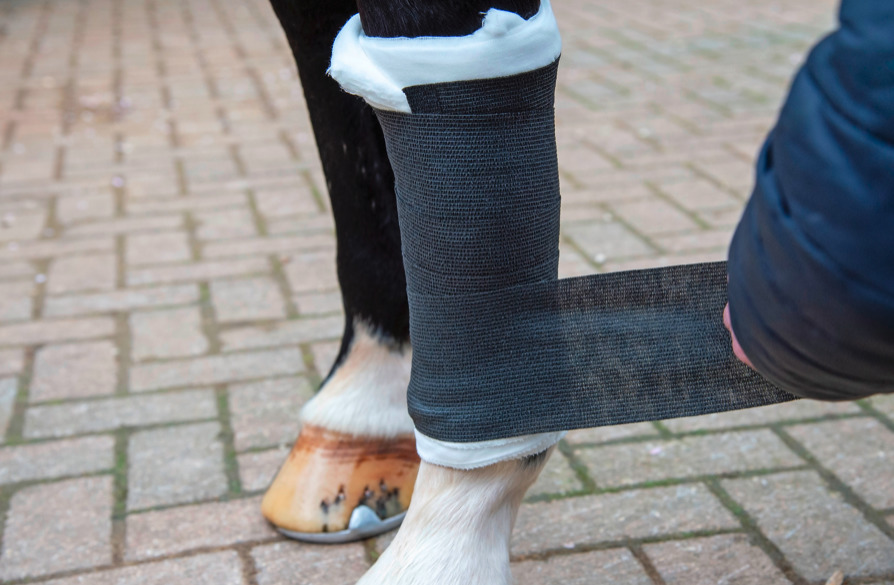 STEP FIVE
STEP FIVE
Wrap the bandage down to within an inch of the bottom of the padding, then spiral up the leg again to finish near the top.
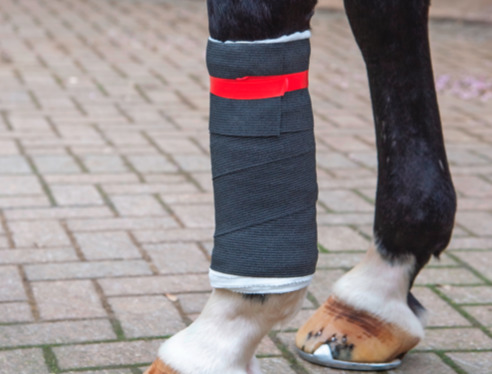 STEP SIX
STEP SIX
Use an adhesive tape, such as masking tape, to secure the end
of the bandage, and wrap the tape loosely around the top and bottom of
the bandage to seal out dirt and debris.
Golden rules for bandaging
Alan advises the following when putting bandages on a horse’s legs:
- Ensure legs are clean and dry to prevent rubbing and sores developing.
- Apply the correct tension. The bandage should be tight enough to stay in place but not so tight as to restrict blood flow.
- Make wraps smooth and even with no wrinkles or bunches. Leg bandages are wrapped in a spiral, and each wrap should overlap the previous layer by half to ensure even distribution of pressure.
- As a general rule, the layer of padding should be at least one inch thick to cushion and protect the leg. Always make sure there is about an inch of padding showing above and below the bandage.
- Wrap bandages from front to back, outside to inside (counter-clockwise on left legs, clockwise on right legs).
- This ensures tension from the bandage is applied to the front of the leg, rather than on the delicate tendons at the back of the leg.
- Always wrap legs in pairs, such as both front legs or both hindlegs.
- Ensure you check leg bandages frequently. Re-bandage every 12 hours for a standing bandage and every day for a wound bandage.
- If in doubt, ask your vet or trainer to show you how to bandage correctly.

